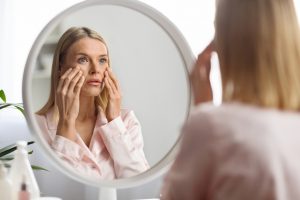Have you heard of it, fat freezing? Its only been around since 2010 when the FDA approved the procedure in the USA, after which it quickly spread to Europe and the UK. Now, most large cities will have one or more clinics that provide fat freezing services, however most people would still not have heard of it.
At this point in time, you will likely only have found out about fat freezing, also known as cryolipolysis, through an advertisement, by word of mouth or maybe after thoroughly researching how to reduce fat. Its an odd treatment, and it often sounds too good to be true, therefore understandably causing distrust and dismissal amongst many. However, as odd as it may seem, it can be highly effective in reducing body fat, and relatively to other beauty treatments, it is very safe.

What to expect from fat freezing
You could consider fat freezing to be the non-invasive and safer alternative to liposuction. It takes longer to see the full results but there is no downtime, less risks to health and wellbeing, and it is significantly cheaper too. Because fat freezing relies on your natural processes to clear the fat cells from your body following treatment, it can take 6 to 12 weeks for results to be fully visible. Results depend per person, but as a rule of thumb you can safely assume that up to 40% of treated fat will be gone by the end of that ‘waiting’ period.
As a patient, you can also stimulate the results. Fat Freezing Manchester recommends that you massage the area twice a day for the two weeks following treatment, that you drink at least 2 litres of water a day and that you stay healthy through – at least – some mild to moderate exercise when you can.

The risks associated with fat freezing
As with all beauty treatments, there may be some adverse effects from fat freezing treatment. Common side effects include bruising, a feeling of tightness, tingling, numbness and general discomfort. These could last a couple of weeks but generally clear after a matter of days. Some people see some clumping of fat cells for a couple of weeks following the treatment but this also goes down on its own. If the clinician uses unsafe equipment or materials then there could be a risk of skin damage. This is avoidable, and any reputable clinician will ensure this is not an issue. Lastly, a rare but scary side effect is paradoxical adipose hyperplasia. Where this condition occurs, the fat cells multiply instead of reduce. The likelihood of this happening is incredibly small. However all patients should be aware of the risk.
Book a Winter Staycation for just £49





